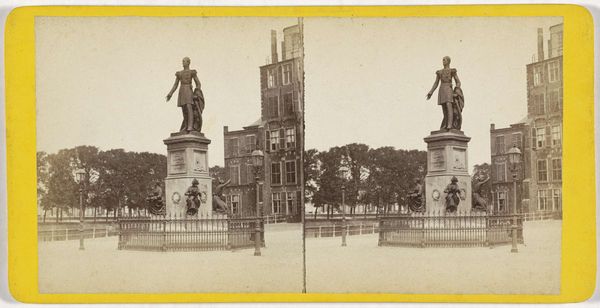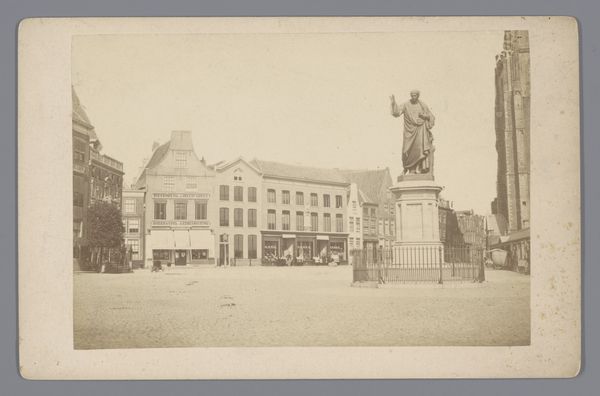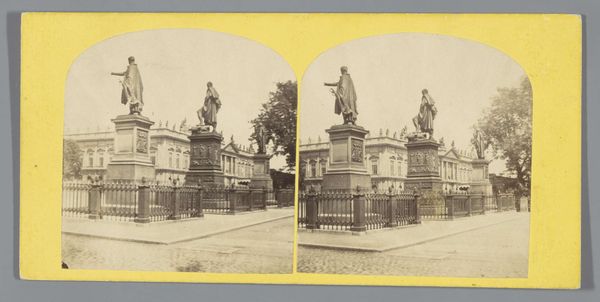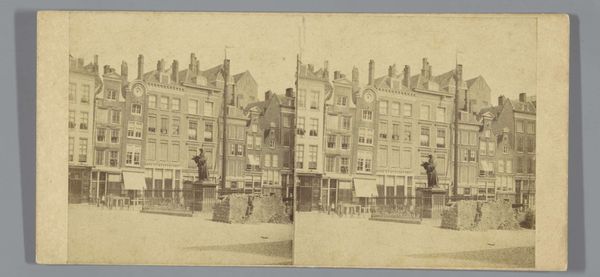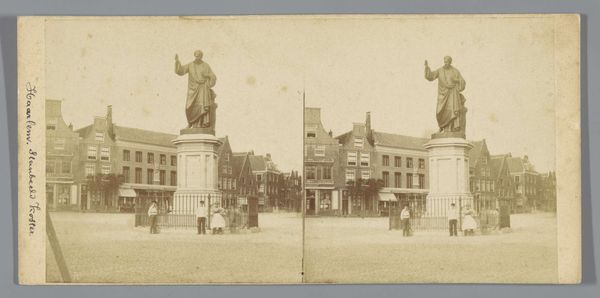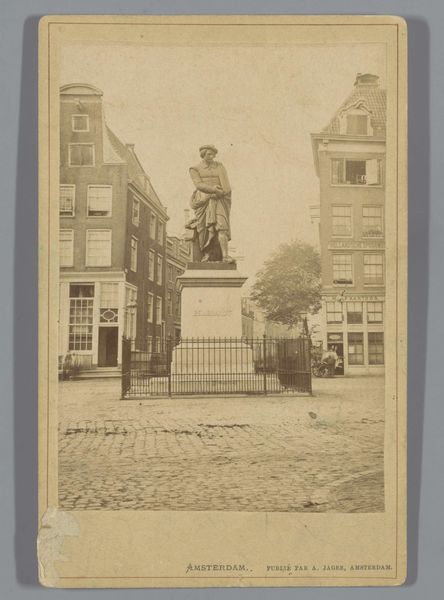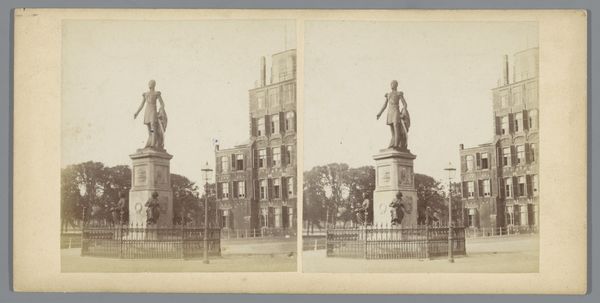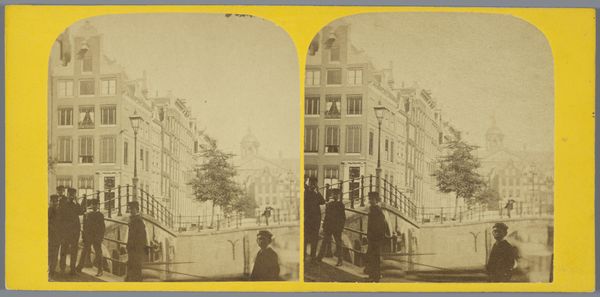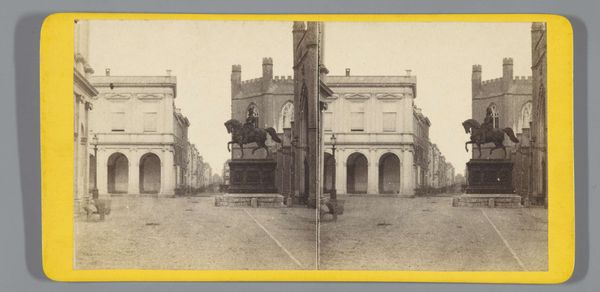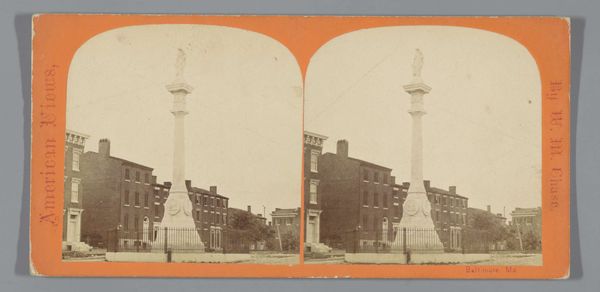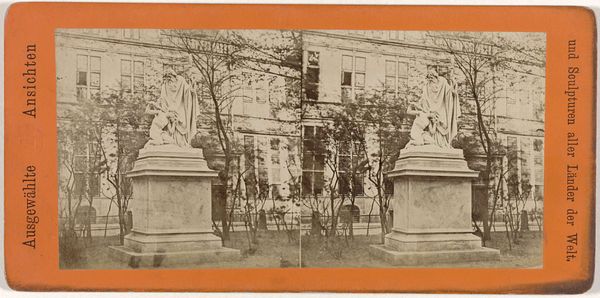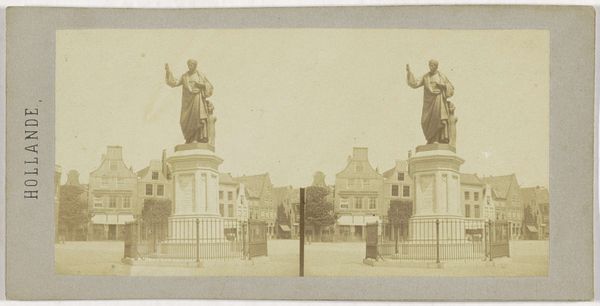
daguerreotype, photography
#
portrait
#
statue
#
daguerreotype
#
photography
#
cityscape
#
realism
Dimensions: height 83 mm, width 175 mm
Copyright: Rijks Museum: Open Domain
Curator: Ah, yes, this daguerreotype by Pieter Oosterhuis, created in 1859, is called "Standbeeld van Rembrandt, Amsterdam" - or "Statue of Rembrandt, Amsterdam." The image resides at the Rijksmuseum. Editor: My first thought is of stillness, a certain quiet formality. The buildings seem to watch over Rembrandt's statue like silent sentinels. Curator: Indeed. It's quite different from today's Amsterdam, bustling with tourists snapping photos. This image captures a contemplative mood. The choice of a daguerreotype emphasizes its connection with an older era and is an early form of photography, resulting in uniquely detailed and fragile images. Editor: It does feel reverential, as though the city holds its breath around its artistic forefather. Rembrandt, of course, represents not just artistic genius but the golden age of Dutch painting. Was the daguerreotype intended as a commemorative gesture, solidifying his place in history? Curator: I think that’s spot on! The statue itself functions as a public declaration of artistic legacy and civic pride, particularly during a time when national identity was being heavily defined. But using photography to document that statue adds a layer. It makes the grand artistic legacy more accessible, reproducible. Editor: Absolutely. And beyond simply commemorating Rembrandt, notice how the city becomes a part of this declaration. The backdrop is distinctly Amsterdam, grounding him in his environment, which makes the overall feeling nostalgic, tinged with sepia tones – not just of the print, but of memory itself. Curator: It really gives a sense of what was important in art back then, the start of something, too. Editor: Yes. A tangible sense of art intersecting with public life and solidifying collective identity. A very touching reminder, wouldn't you agree? Curator: Definitely. It helps reflect what the past meant at that specific period in history and its effects on art today.
Comments
No comments
Be the first to comment and join the conversation on the ultimate creative platform.
